
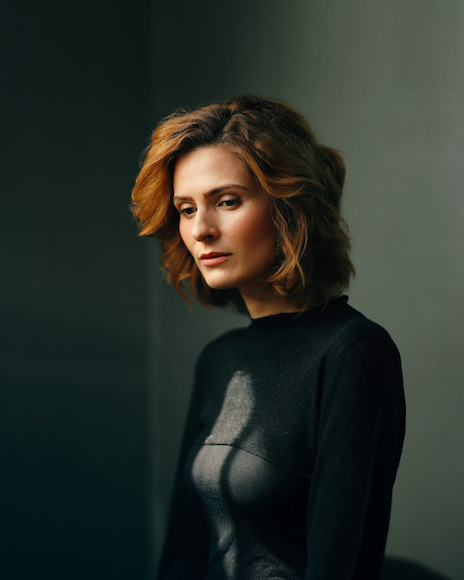
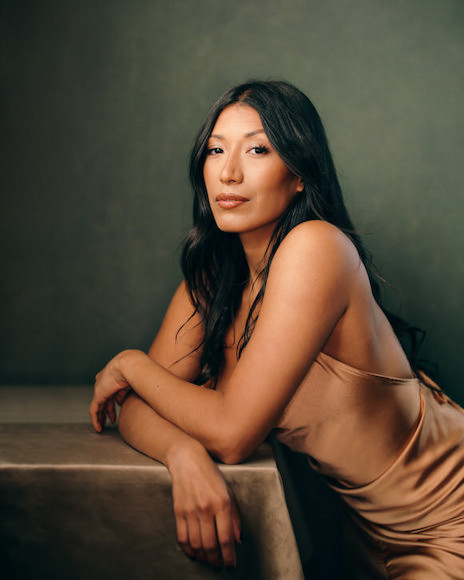
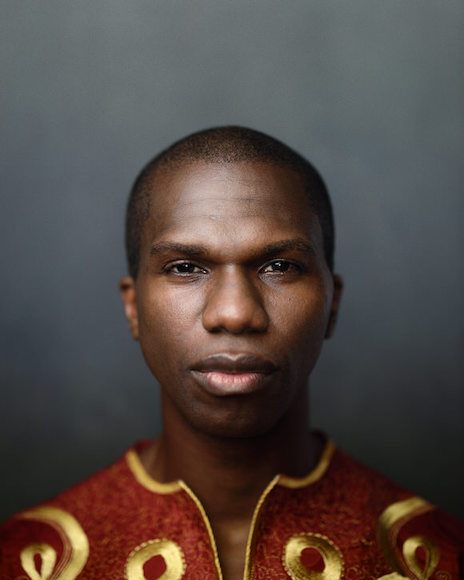
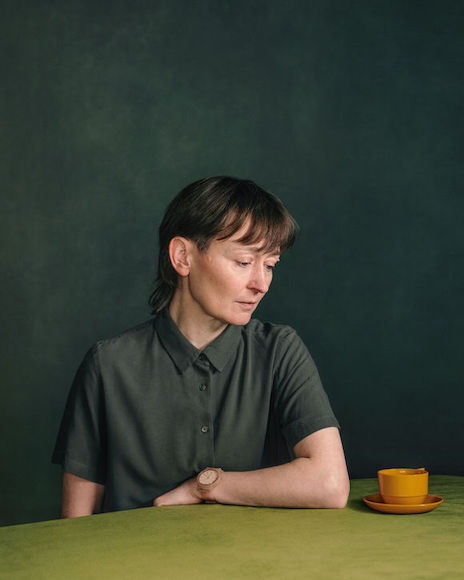

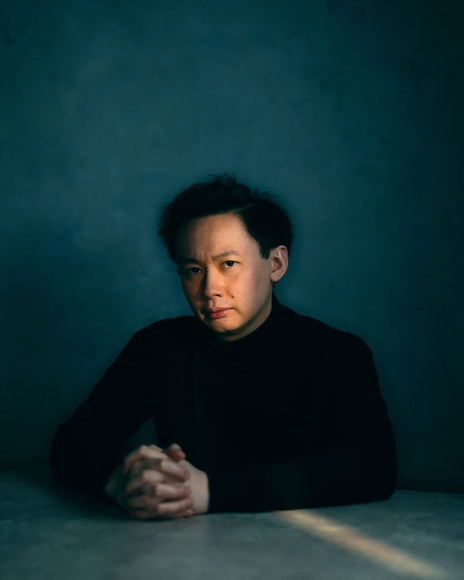

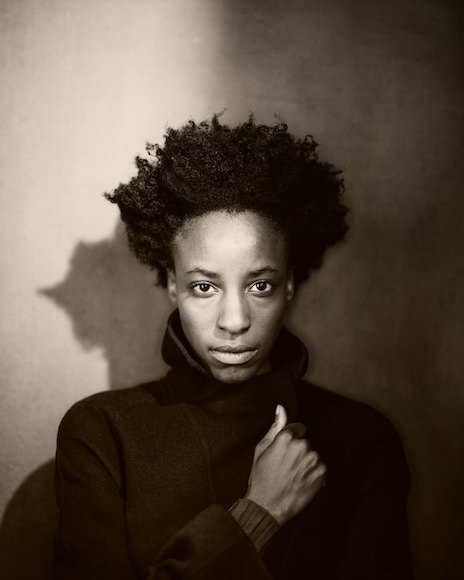


Ivan Weiss
Portrait | Last Updated: May 1, 2023
I was born into a house of photography as my dad shot press and publicity work for local news, so I actually learned film photography before I learned how to ride a bike.
I had my first picture published in the school magazine when I was eleven. Then at sixteen, some questionable career advice sent me off in a different direction. I came back to photography later on in life, by which time it had all gone digital.
Having worked in various jobs and careers in different countries, I developed a deep interest in people and psychology. This pushed me in the direction of portrait photography.
Being based in London, I knew I didn’t want to be at the mercy of the weather, so getting a studio and being able to make my own weather seemed like the obvious choice.
While I’ve never studied photography in a formal sense, I’ve always been fascinated by the technical side of it. So learning how to use lights, modifiers, and software has always been something I’ve enjoyed.
Canon EOS R5 – ever since my very first all-manual A1, I’ve always had Canon cameras. This camera is the perfect fit for what I do, it’s adaptable for when I go out on location with features like IBIS, but at its heart, it’s a studio camera, perfect for portraiture with its eye-focus AF and a really great sensor.
Canon EOS R – this is my backup camera. I moved to mirrorless quite early, and while it was definitely a step forward, it doesn’t compare to the usability and image quality of the Canon EOS R5.
Canon RF 50mm ƒ/1.2L – this is my all-time favourite lens. It’s relatively light and extremely fast. It works so well with the R5 body. I love the 50mm focal length as it allows me to get close to my subjects and create the intimacy that most great portraits have, but it’s also useable for full-length shots.
Canon RF 85mm ƒ/1.2L DS – I shoot with wide apertures a lot, and the DS version of this lens is optimised for that kind of work. I use the 85mm for a more formal feel to my portraits, keeping a slightly more respectful distance between the camera and the subject.
Canon RF 28-70 ƒ/2.0L – this is the Canon engineers showing off a bit, I would say, but it’s a beauty of a lens when I need to work quickly and adapt to different scenarios. I rarely use it wider than 40mm, but having the ability to zoom without sacrificing much on speed is a real bonus.
Canon TS-E 45mm ƒ/2.8 – I occasionally like to experiment with selective focusing techniques. I have adapted this lens so that the shift and tilt work in the same direction rather than being ninety degrees from each other. I use the EF to EOS R adapter so that this lens works on the Canon EOS R5.
Westcott Flex – I have the original 4-Panel Peter Hurley Flex Kit. This was my first foray into continuous lighting, and it completely changed the way I work. Combined with a mirrorless camera, continuous light gives an unparalleled ability to create the shot in the camera and really get very precise about light placement.
I’ll probably upgrade to the bi-colour version at some point soon, as I like to use colour contrast a lot in my work. But the sturdiness and ease of use of the original version is hard to beat.
NanLite Forza 720B – this has all the advantages of the Flex Kit, but it is designed to be used with modifiers. It’s bi-colour, so I can dial in different moods and use it to match with or contrast the ambient light.
I mostly use this as my key light as it has a huge amount of power. It’s also great to bounce off the ceiling in order to add a general fill to an entire scene.
NanLite Forza 300B – the same as the 720B, but smaller, lighter, and with less power. This will often be used as a fill light in the studio or as a key light if I’m taking a minimal kit on location. It will work with any Bowens-mount modifier.
NanLite Forza 60C – this is a great accent light. It’s full colour, so I can use it to change or enhance a background, add a contrasting colour to a kick or fill, or even use it as a key light when the shot calls for a colour effect.
Think Tank Production Manager 50 case – for any location work I like to have everything in one place. It is just less to keep track of; however, it does get quite heavy when fully loaded.
Crumpler Bags – for my camera, lens and laptop, I’ve always used these bags. I’ve got various models in different sizes for different jobs. My oldest Crumpler bag is pushing twenty years, and it has been everywhere with me and survived everything with fewer scars and injuries than I have.
I’m pretty sure it will outlast me. I even use it most days when I go to the supermarket to do the shopping!
Manfrotto 055 CF Mag Tripod with Arca Swiss P0 Ball Head and Nodal Ninja EZ-Leveller II – so the Manfrotto is a good compromise between weight and sturdiness. The Arca P0 is the fastest, most useable ball head I’ve come across, and it is super easy to use, even one-handed. I keep the EZ-Leveller on the tripod for those times when I want to line up my horizontals and verticals precisely.
Avenger C-Stands – this stuff just feels the most solid. I have other grips and stands from other manufacturers, but it’s nice to have peace of mind when booming a heavy light over a paying client.
ProMediaGear L-bracket – I searched high and low for an L-Bracket that would accommodate a tether cable while using a tripod that didn’t need to be dismantled in order to change the camera batteries. ProMediaGear is the only one on the market that doesn’t force me to compromise. I’ve got a custom-fit bracket for each of my camera bodies.
TetherTools Cables and Pony Clamps – the tether cables are legendary, and there’s just no question of using another brand for me. The pony clamps are also the best I have found, as they are the only brand where the rubber grips don’t slip off plus, they have a really positive spring.
Soft Light Modifiers – I have a large collection of modifiers, mostly from Elinchrom, Rotalux and Phottix, ranging from forty centimetres up to one hundred and seventy-five centimetres and in various shapes. The Phottix mods are really fast to set up and tear down; ultimately, this is what makes them my first choice in many situations.
Similarly, for fast-moving situations on location, I love the SMDV Speedbox 70. I mainly use the Elinchrom and Rotalux Mods in the studio, where there is more time to make considered choices.
For hard light modifiers, I love Fresnel lenses, projectors and snoots used in combination with flags and barn doors to create interesting shapes.
I have several grids made by Andrey at SoftboxGrid in Ukraine, and each one is custom-made to the specific modifier.
I never leave home without gaffer tape or hazard tape in case I need to mark off areas where clients or the public may be stepping over cables. I also carry a Swiss army knife in each of my bags.
For canvas backdrops, I use Artery and for the paper, I use Colorama.
Apple iMac 27” – I use this piece of hardware along with a Wacom Intuos Pro S tablet for tethering and RAW Conversion along with Canon Digital Photo Professional 4. For my post-production work, I use Affinity Photo 2 and I create my own presets, which are available to buy on the Affinity Content Store.
My best bit of advice is to be honest with yourself about what you most enjoy shooting and then align everything so that you can do more of what you love.

Check out these 8 essential tools to help you succeed as a professional photographer.
Includes limited-time discounts.












